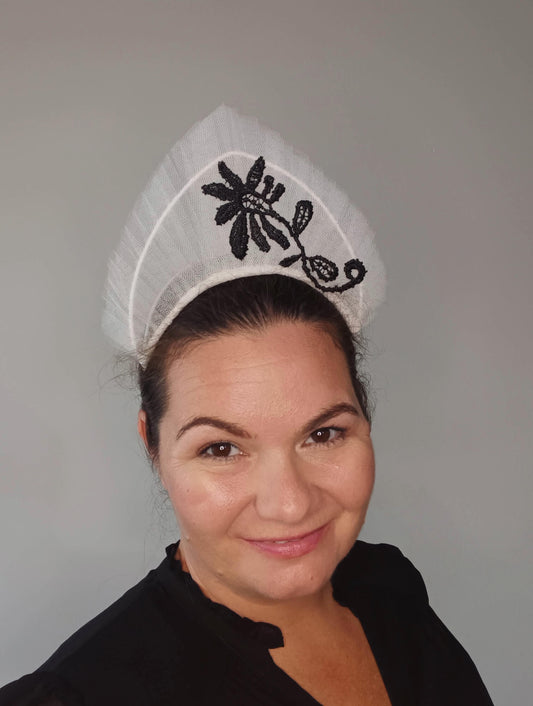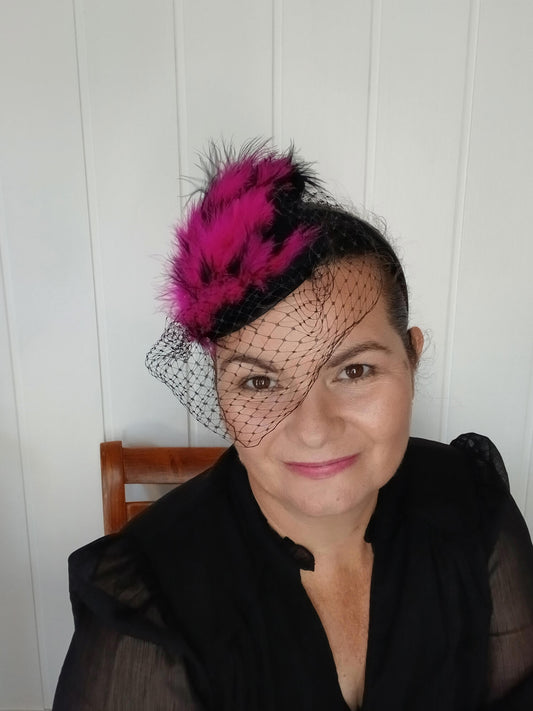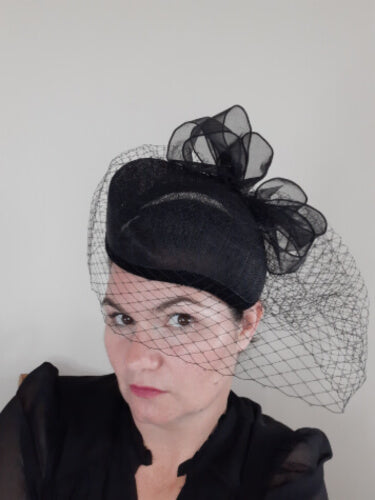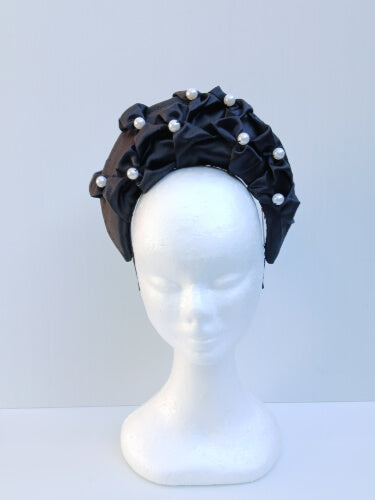
Why are we drawn to black?
It’s a colour that whispers rather than shouts—yet it commands attention, stirs emotion, and speaks volumes without uttering a word. From the fertile banks of the Nile to the runways of Paris, black has carried an enduring mystique across cultures, centuries, and contexts. It is a symbol, a statement, a sensation. Often misunderstood as the absence of color, black is, in fact, full of meaning—at once a canvas for expression and a mirror for emotion. This exploration traces the symbolic, psychological, and cultural dimensions of black: how it has shaped our histories, influenced our identities, and continues to define modern aesthetics in fashion, branding, and design.
The Symbolism of Black: Power, Mystery, and Cultural Meaning
The colour black carries a rich and complex symbolism that spans centuries and civilisations. In ancient Egypt, black was revered for its association with fertility and rebirth, as the dark, nutrient-rich silt left behind by the Nile floods brought life to the land. This sacred connection positioned black not as a colour of death, but of regeneration and growth. Similarly, in ancient China, black symbolised the element of water—linked to depth, mystery, and good fortune. It was believed to bring balance and harmony, often featured in traditional calligraphy and art to express calm and introspection.
In the Middle Ages, black took on new dimensions. It became a colour of status and power, worn by clergy and nobility to project authority, seriousness, and control. Judges’ robes, clerical garments, and royal attire used black to command respect. But alongside its elevated status, black was also feared—it became tied to darkness, witchcraft, and the occult, gaining associations with secrecy and the unknown. This duality—power and fear—remains at the heart of black’s symbolism today.
Culturally, black means very different things across the world. In the West, it is closely associated with mourning, formality, and elegance. It signifies loss and grief at funerals yet is also the foundation of high fashion and black-tie sophistication. In Eastern cultures, including China and Japan, black can also relate to mourning but is sometimes viewed as a colour of health, wisdom, or resilience. In parts of the Middle East, black represents both mourning and mystery, while in many African cultures, it can symbolise age, masculinity, and spiritual maturity. Among Indigenous communities, black may represent strength, earth connection, or the mysteries of the universe, acting as a link between the physical and the spiritual.
Subcultures have also redefined black in powerful ways. The goth movement, which emerged in the late 20th century, embraced black as a form of emotional expression and rebellion. Drawing on earlier punk aesthetics, goth fashion uses black to engage with themes of mortality, introspection, and non-conformity. For many, wearing black is not just a style choice—it’s a visual language for grief, resilience, identity, and depth.
In modern branding and design, black has become synonymous with luxury, minimalism, and professionalism. From the sleek lines of designer packaging to the tailored silhouettes of business suits, black signals exclusivity, competence, and timeless elegance. It is a colour that commands attention without shouting, offering sophistication through subtlety.
Ultimately, black is never just one thing. It is authority and rebellion, grief and rebirth, elegance and mystery. Its symbolism shifts depending on time, place, and context—but it always invites us to look a little deeper.
The Psychology of Black: Emotional and Perceptual Responses
The colour black has a powerful psychological presence, influencing how we feel, behave, and are perceived by others. While its meanings can shift depending on culture and personal experience, black consistently evokes strong emotional reactions.
Emotional Impact: Protection, Power, and Shadow
Emotionally, black is deeply complex. It’s often seen as a colour of strength, seriousness, and protection—like armour against the outside world. Many people report feeling more in control, composed, or even mysterious when wearing black. Psychologically, it can act as a shield, helping individuals feel safe while also projecting confidence.
Yet, black can also stir darker emotions. It’s tied to mourning, grief, and fear. From ancient times to modern culture, black has represented the unknown—the void of space, the night, the end. For some, this evokes calm and introspection; for others, anxiety or sadness.
Behavioural Influence: How Black Shapes Actions and Perception
The way we behave—or are perceived—when wearing black is equally fascinating. In professional and formal settings, black conveys authority, intelligence, and elegance. Think of judges' robes, designer suits, and formal evening wear. Studies suggest that people wearing black are more likely to be perceived as serious, capable, and trustworthy. It’s no coincidence that black has become the default for job interviews, boardrooms, and branding aimed at high-status consumers.
However, black can also intimidate. In certain contexts, it may create distance or seem unapproachable. It can communicate strength, but also dominance or secrecy—why else do so many movie villains, from Dracula to Darth Vader, wear black?
Studies and Theories: The Colour of Judgement
German physicist Hermann von Helmholtz once stated, “Black is real sensation, even if it is produced by the entire absence of light.” In other words, black isn't the absence of perception—it’s a sensation of its own. Psychologists have studied how colour affects our judgements and behaviours, and black consistently emerges as one of the most influential. Its association with seriousness and control can impact everything from workplace dress codes to courtroom decisions.
Language also reveals our unconscious colour biases. Terms like “black sheep,” “blackmail,” and “blacklist” reinforce the link between black and negativity or exclusion. These associations shape how we feel about the colour, even before we’re aware of it.
Personal Identity: Confidence, Control, and Individuality
For many, black isn’t just a colour—it’s an identity. People who frequently wear black often describe themselves as ambitious, independent, or introspective. Black clothing can feel like a uniform for confidence: simple, elegant, and unmistakably strong. But it’s not only about power—it can also reflect sensitivity or a desire for privacy, acting as both a statement and a shield.
Black allows people to express their individuality while maintaining a timeless, minimalist edge. Whether worn to signal professionalism or to carve out a personal aesthetic, black adapts to the mood and message of the wearer.
Black in Modern Contexts
In today’s world, black continues to be a colour loaded with meaning—refined, deliberate, and deeply expressive. Its presence across fashion, branding, art, and design is anything but accidental. Rather, it’s a strategic choice that reflects centuries of symbolism and taps into powerful psychological responses.
Fashion: Timelessness, Expression, and Minimalism
Few colours dominate fashion like black. It’s a staple in nearly every wardrobe, celebrated for its versatility and timeless appeal. From the iconic little black dress to tailored suits and avant-garde street wear, black is often the go-to for elegance, mystery, and personal expression.
Minimalists favour black for its clean, uncluttered look. It's effortlessly chic, making it ideal for those who value simplicity without sacrificing impact. At the same time, creatives and subcultures—from goth to high fashion—use black as a canvas to express identity, emotion, or rebellion. In fashion, black doesn’t scream for attention—it commands it with quiet confidence.
Psychologically, black’s association with power, sophistication, and protection mirrors the way people wear it. It becomes a tool for self-definition—projecting strength, confidence, or emotional depth depending on the context and the individual.
Branding & Marketing: Luxury, Exclusivity, and Boldness
In branding, black speaks volumes without saying a word. High-end labels like Chanel, Prada, and Yves Saint Laurent use black not just for aesthetic reasons, but because it communicates luxury, authority, and timeless sophistication. In tech and automotive industries—think Apple or Lamborghini—black often conveys cutting-edge precision and elite status.
The psychological pull of black is key here. Consumers associate the colour with quality, prestige, and trustworthiness. A black logo or product design suggests something bold, refined, and worthy of investment. It’s not just a colour—it’s a promise of excellence.
Black’s ability to elevate a brand's image stems directly from its symbolic weight and emotional resonance. It suggests exclusivity and strength while also maintaining a universal, almost archetypal appeal.
Design & Art: Mood-Setting, Contrast, and Sophistication
In visual design and contemporary art, black plays a crucial role in setting tone and balance. It creates drama, draws focus, and adds depth. Used strategically, black can make other colours pop or pull the viewer into a more introspective space.
Designers often use black to create a sense of intimacy or intensity, whether in an interior space, a painting, or a website. It helps define edges, hold space, and balance composition. In many ways, black is both absence and presence—a bold silence that shapes everything around it.
Artists and designers are aware of the psychological impact black carries. It can calm or challenge, conceal or reveal. When used well, it speaks directly to our emotions—evoking elegance, suspense, or contemplation with subtle power.
Symbolism Meets Psychology: Why Black Works
What unites black’s role across these modern contexts is the seamless intersection between symbolism and psychology. Black is effective because it draws on deeply rooted associations—power, prestige, elegance, mystery—and leverages them to shape perception and behaviour.
A fashion designer might use black to create a look of refined minimalism. A luxury brand might adopt it to project exclusivity and control. An artist might explore black’s capacity for introspection and emotional contrast. In each case, black is more than a design choice—it’s a psychological strategy.
We respond to black not only because of how it looks, but because of what it makes us feel. Its history, symbolism, and emotional weight are always present, whether in the boardroom, the gallery, or the street.
Final Thoughts
What unites black’s role across these modern contexts is the seamless intersection between symbolism and psychology. Black is effective because it draws on deeply rooted associations—power, prestige, elegance, mystery—and leverages them to shape perception and behaviour.
A fashion designer might use black to create a look of refined minimalism. A luxury brand might adopt it to project exclusivity and control. An artist might explore black’s capacity for introspection and emotional contrast. In each case, black is more than a design choice—it’s a psychological strategy.
We respond to black not only because of how it looks, but because of what it makes us feel. Its history, symbolism, and emotional weight are always present, whether in the boardroom, the gallery, or the street.
Featured collection
-
White and Black Tulle Millinery Crown by Melissa Rath Millinery
Regular price $180.00 AUDRegular priceUnit price / per -
Pink and Black Millinery Fascinator by Melissa Rath Millinery
Regular price $220.00 AUDRegular priceUnit price / per -
Black Veiled Millinery Beret by Melissa Rath Millinery
Regular price $300.00 AUDRegular priceUnit price / per -
Black Smocked Satin Crown by Melissa Rath Millinery
Regular price $280.00 AUDRegular priceUnit price / per







